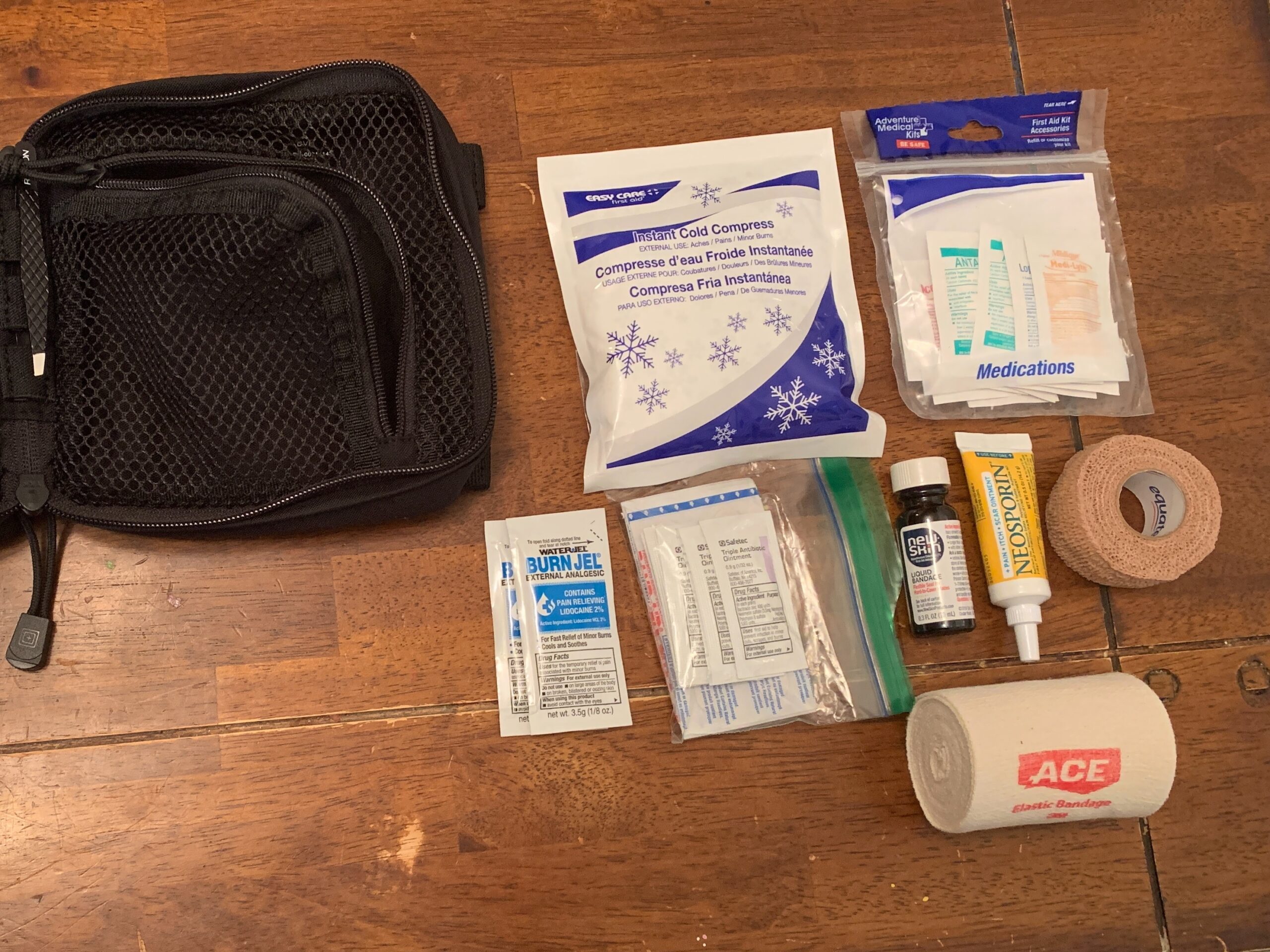-
Table of Contents
“Stay prepared and enjoy the summer with our essential guide to building a comprehensive first aid kit.”
Building a summer first aid kit is essential for ensuring the safety and well-being of yourself and others during the warmer months. Whether you’re planning a beach vacation, going on a hiking trip, or simply spending time outdoors, having a well-stocked first aid kit can help you handle minor injuries and illnesses that may occur. In this guide, we will provide you with a comprehensive introduction on how to build a summer first aid kit, ensuring you are prepared for any unexpected situations that may arise.
Essential Items for a Summer First Aid Kit
When it comes to enjoying the summer season, it’s important to be prepared for any unexpected accidents or injuries that may occur. Building a summer first aid kit is an essential step in ensuring the safety and well-being of yourself and your loved ones. In this article, we will discuss the essential items that should be included in a summer first aid kit.
One of the most important items to have in your summer first aid kit is adhesive bandages. These are essential for covering small cuts, scrapes, or blisters that may occur during outdoor activities. It’s important to have a variety of sizes and shapes to accommodate different types of injuries. Additionally, it’s a good idea to include waterproof bandages, as they will stay in place even if they come into contact with water.
Another essential item for a summer first aid kit is antiseptic wipes or solution. These can be used to clean wounds and prevent infection. It’s important to clean any cuts or scrapes as soon as possible to reduce the risk of bacteria entering the wound. Including a small bottle of antiseptic solution or a pack of antiseptic wipes in your first aid kit will ensure that you are prepared to clean any wounds that may occur.
In addition to adhesive bandages and antiseptic wipes, it’s important to include a pair of tweezers in your summer first aid kit. Tweezers can be used to remove splinters, ticks, or other foreign objects that may become embedded in the skin. It’s important to remove these objects as soon as possible to prevent further injury or infection. Including a pair of tweezers in your first aid kit will ensure that you are prepared to handle these situations.
Another essential item for a summer first aid kit is sunscreen. Sunburns can be painful and can increase the risk of skin cancer. It’s important to protect your skin from the harmful rays of the sun by applying sunscreen regularly. Including a bottle of sunscreen with a high SPF in your first aid kit will ensure that you are prepared to protect your skin during outdoor activities.
In addition to sunscreen, it’s important to include aloe vera gel in your summer first aid kit. Aloe vera gel can provide relief for sunburns and help to soothe irritated skin. Applying aloe vera gel to sunburned skin can help to reduce pain and inflammation. Including a small bottle of aloe vera gel in your first aid kit will ensure that you are prepared to treat sunburns if they occur.
Lastly, it’s important to include a basic first aid manual in your summer first aid kit. This manual can provide guidance on how to treat common injuries and illnesses that may occur during the summer season. It’s important to familiarize yourself with the information in the manual so that you are prepared to handle any situation that may arise.
In conclusion, building a summer first aid kit is an essential step in ensuring the safety and well-being of yourself and your loved ones during the summer season. By including essential items such as adhesive bandages, antiseptic wipes, tweezers, sunscreen, aloe vera gel, and a basic first aid manual, you will be prepared to handle any unexpected accidents or injuries that may occur. Remember to regularly check and restock your first aid kit to ensure that it is always ready for use.
Tips for Assembling a Summer First Aid Kit
Summer is a time for outdoor activities, vacations, and fun in the sun. However, it’s also a time when accidents and injuries can occur more frequently. That’s why it’s important to have a well-stocked first aid kit on hand. In this article, we will provide you with some tips for assembling a summer first aid kit that will help you be prepared for any mishaps that may occur.
When it comes to building a summer first aid kit, it’s important to consider the specific needs and activities of your family. Start by assessing the types of activities you will be engaging in during the summer months. Will you be spending a lot of time at the beach or pool? Will you be hiking or camping? These factors will help determine what items you should include in your kit.
One essential item for any summer first aid kit is sunscreen. Protecting your skin from the harmful rays of the sun is crucial, especially during the summer months when the sun is at its strongest. Look for a broad-spectrum sunscreen with a high SPF and make sure to apply it regularly, especially if you will be spending a lot of time outdoors.
In addition to sunscreen, it’s important to include items that can help treat common summer ailments. For example, insect repellent is a must-have for any outdoor activities. Mosquitoes and other insects can carry diseases, so it’s important to protect yourself and your family from bites. Look for a repellent that contains DEET, as it is the most effective at repelling insects.
Another common summer ailment is sunburn. Even with the best intentions, it’s easy to get too much sun and end up with a painful burn. That’s why it’s important to include aloe vera gel or a soothing lotion in your first aid kit. These products can help alleviate the pain and discomfort associated with sunburn and promote healing.
In addition to these items, it’s important to include basic first aid supplies such as adhesive bandages, gauze pads, and antiseptic wipes. These items can be used to treat minor cuts, scrapes, and burns that may occur during outdoor activities. It’s also a good idea to include a pair of tweezers for removing splinters or ticks.
Finally, don’t forget to include any necessary medications in your first aid kit. If you or a family member has a specific medical condition, make sure to include any necessary medications or supplies. It’s also a good idea to include over-the-counter medications such as pain relievers, antihistamines, and anti-diarrheal medications.
In conclusion, building a summer first aid kit is an important step in being prepared for any accidents or injuries that may occur during the summer months. By assessing your family’s specific needs and activities, you can ensure that your first aid kit is well-stocked with the necessary items. Remember to include sunscreen, insect repellent, items for treating sunburn, basic first aid supplies, and any necessary medications. With a well-stocked first aid kit, you can enjoy your summer activities with peace of mind knowing that you are prepared for any mishaps that may occur.
Common Summer Injuries and How to Treat Them
Summer is a time for fun and adventure, but it can also bring its fair share of injuries. From sunburns to bug bites, it’s important to be prepared for common summer injuries. One way to ensure you’re ready for anything is by building a summer first aid kit. In this article, we will discuss common summer injuries and how to treat them, so you can be prepared for whatever the season throws at you.
One of the most common summer injuries is sunburn. Spending too much time in the sun without proper protection can lead to painful and damaging burns. To treat a sunburn, it’s important to cool the skin and reduce inflammation. Applying aloe vera gel or a cool compress can help soothe the burn. It’s also important to stay hydrated and avoid further sun exposure until the burn has healed.
Another common summer injury is heat exhaustion. This occurs when the body overheats due to prolonged exposure to high temperatures. Symptoms of heat exhaustion include dizziness, nausea, and excessive sweating. To treat heat exhaustion, it’s important to move to a cool, shaded area and drink plenty of fluids. Applying a cool compress to the neck and wrists can also help lower body temperature.
Insect bites and stings are also common during the summer months. Mosquitoes, bees, and wasps can all leave painful and itchy bites. To treat insect bites, it’s important to clean the area with soap and water to prevent infection. Applying an over-the-counter hydrocortisone cream can help reduce itching and inflammation. If you have a severe allergic reaction to an insect bite, such as difficulty breathing or swelling of the face, seek immediate medical attention.
Cuts and scrapes are another common summer injury, especially for those who enjoy outdoor activities. To treat a cut or scrape, it’s important to clean the wound with soap and water to prevent infection. Applying an antibiotic ointment and covering the wound with a sterile bandage can help promote healing. If the cut is deep or won’t stop bleeding, seek medical attention.
Lastly, it’s important to be prepared for minor burns, such as those from a hot grill or campfire. To treat a minor burn, it’s important to cool the area with cold water for at least 10 minutes. Applying a burn ointment or aloe vera gel can help soothe the burn and promote healing. It’s important to cover the burn with a sterile bandage to protect it from infection.
In conclusion, building a summer first aid kit is essential for being prepared for common summer injuries. Sunburns, heat exhaustion, insect bites, cuts and scrapes, and minor burns are all common during the summer months. By having the necessary supplies on hand, such as aloe vera gel, hydrocortisone cream, and sterile bandages, you can effectively treat these injuries and prevent further complications. Remember to always seek medical attention for severe injuries or allergic reactions. Stay safe and enjoy your summer adventures!In conclusion, building a summer first aid kit is essential for ensuring the safety and well-being of individuals during the summer months. It should include basic supplies such as bandages, antiseptic wipes, sunscreen, insect repellent, and over-the-counter medications for common ailments. Additionally, it is important to regularly check and replenish the kit to ensure its effectiveness in providing immediate care for any potential injuries or health issues that may arise during summer activities.




